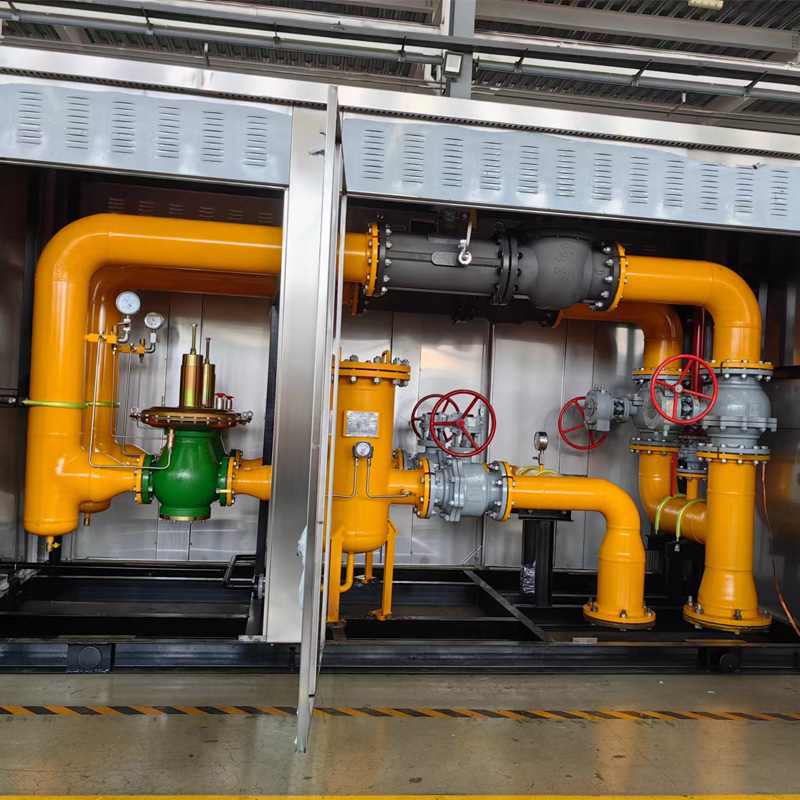
Dec . 24, 2024 17:53
Back to list
Pressure Regulation Systems for Enhanced Safety and Efficiency in Fluid Control
Understanding Pressure Reducing Devices Functionality and Applications
Pressure reducing devices play a crucial role in various industries by managing and regulating pressure levels in fluids and gases. These devices ensure that the pressure within a system remains within safe and optimal limits, thereby enhancing safety, efficiency, and performance. In this article, we will delve into the working principles, types, applications, and benefits of pressure reducing devices.
What is a Pressure Reducing Device?
A pressure reducing device, commonly known as a pressure regulator, is a mechanical device that automatically reduces and maintains a pre-set outlet pressure from a high-pressure source. These instruments can adjust to changes in inlet pressure and flow demands while keeping the output pressure stable. The primary function of these devices is to protect downstream equipment, ensure efficient operation, and maintain consistent performance across various applications.
Working Principles
Pressure reducing devices operate based on a combination of mechanical and sometimes electronic components. The core mechanism usually includes a diaphragm or piston that reacts to changes in pressure. When the inlet pressure exceeds the predetermined set point, the diaphragm moves in response to the pressure differential, which redirects flow and limits the outlet pressure.
Typically, these devices feature an adjustment knob or screw to set the desired outlet pressure. As the downstream system's pressure changes—either due to fluctuations in demand or changes in inlet pressure—the regulator automatically adjusts to maintain the pre-set pressure. This dynamic response is essential in ensuring consistent performance and reducing the risk of overpressure, which can cause equipment failure or pose safety hazards.
Types of Pressure Reducing Devices
There are numerous types of pressure reducing devices, each designed for specific applications
1. Pneumatic Regulators These regulators control the air pressure within pneumatic systems, commonly found in manufacturing processes and automation.
2. Hydraulic Regulators Utilized in hydraulic systems, these devices manage the pressure of hydraulic fluids to ensure that hydraulic machinery operates efficiently.
3. Gas Pressure Regulators Used in various applications, such as natural gas distribution and welding, these regulators maintain stable gas pressure to ensure safe and effective usage.
4. Water Pressure Regulators These devices are installed in plumbing systems to ensure that water pressure remains within safe limits, preventing pipe damage and enhancing water flow consistency.
pressure reducing device

Applications
Pressure reducing devices are used across diverse industries, from manufacturing and oil and gas to water treatment and food processing. Some common applications include
- Industrial Equipment They protect sensitive equipment from pressure surges and ensure proper operation of machinery. - HVAC Systems In heating, ventilation, and air conditioning systems, pressure regulators maintain consistent airflow and prevent duct damage.
- Automotive Fuel pressure regulators are used in gasoline engines to ensure proper fuel delivery and engine performance.
- Medical Equipment In medical gas delivery systems, such as oxygen supply, pressure regulators ensure safe and accurate flow rates.
Benefits of Using Pressure Reducing Devices
The implementation of pressure reducing devices offers numerous benefits
1. Safety By controlling and reducing pressure, these devices help prevent accidents and equipment damage, ensuring a safer working environment.
2. Efficiency Maintaining optimal pressure levels enhances system efficiency, reduces energy consumption, and minimizes wear on equipment.
3. Cost-Effectiveness By preventing damage and reducing energy costs, pressure regulators can lead to significant savings over time.
4. Versatility With various types available, pressure reducing devices can be tailored to suit specific industrial needs and applications.
Conclusion
In summary, pressure reducing devices are integral to the safe and efficient operation of systems across multiple industries. Their ability to maintain stable pressure levels enhances equipment reliability, promotes safety, and leads to cost savings. As technology continues to evolve, the design and functionality of these devices are likely to improve, further enhancing their importance in modern industrial applications. Understanding and utilizing pressure reducing devices is essential for anyone involved in the management of systems that operate under varying pressure conditions.
Latest news
-
Safety Valve Spring-Loaded Design Overpressure ProtectionNewsJul.25,2025
-
Precision Voltage Regulator AC5 Accuracy Grade PerformanceNewsJul.25,2025
-
Natural Gas Pressure Regulating Skid Industrial Pipeline ApplicationsNewsJul.25,2025
-
Natural Gas Filter Stainless Steel Mesh Element DesignNewsJul.25,2025
-
Gas Pressure Regulator Valve Direct-Acting Spring-Loaded DesignNewsJul.25,2025
-
Decompression Equipment Multi-Stage Heat Exchange System DesignNewsJul.25,2025

